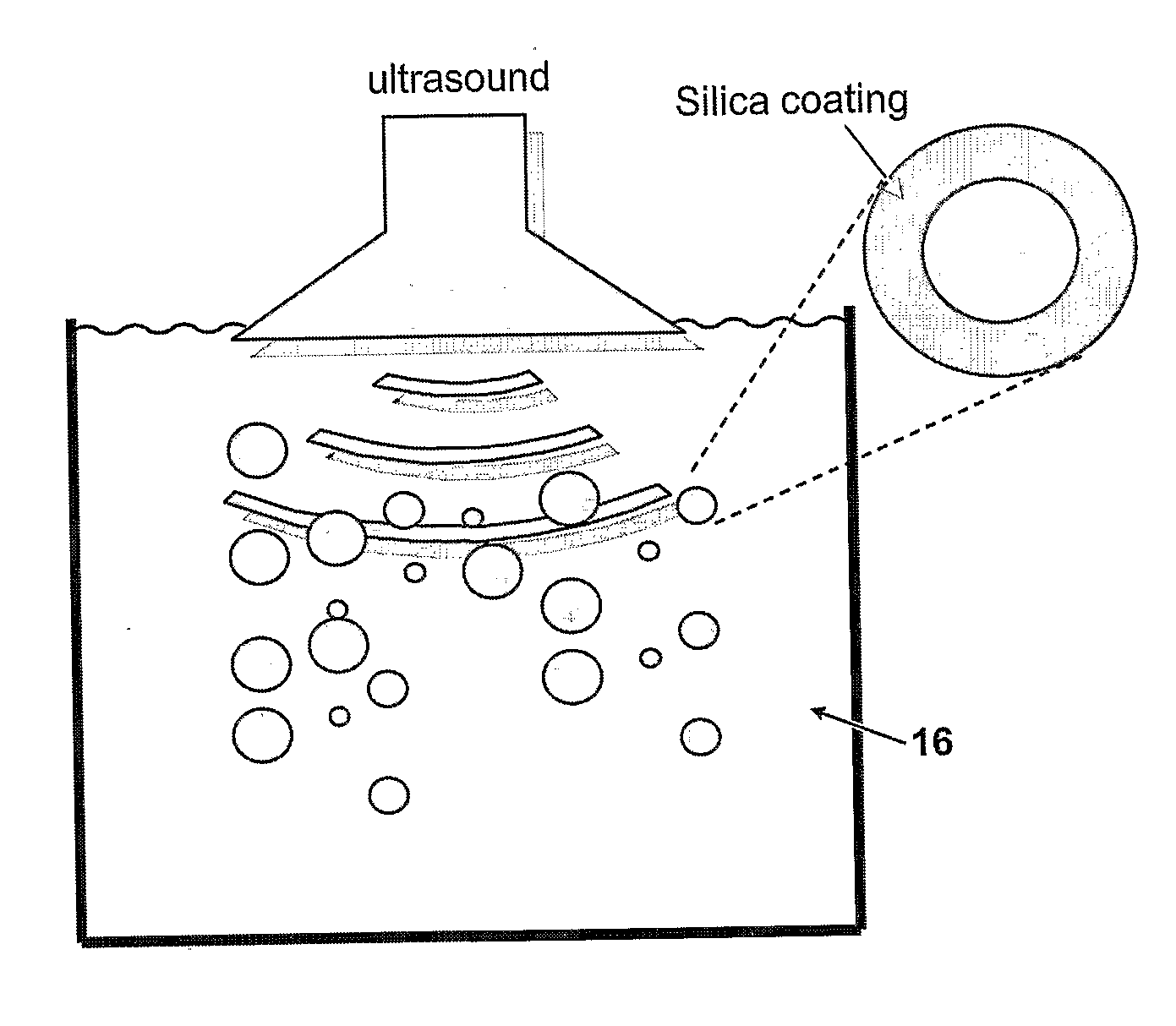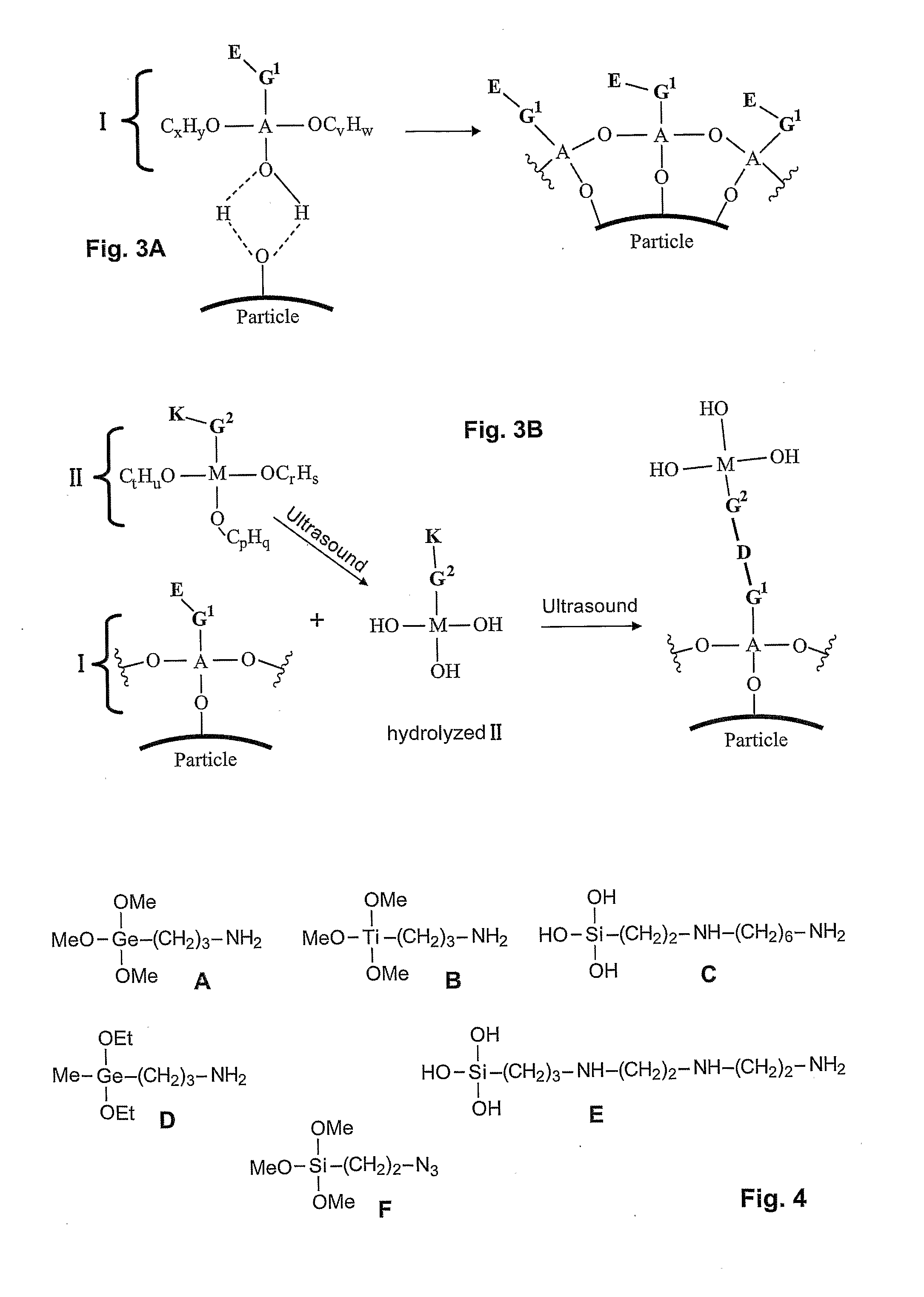Method of coating a particle
a technology of coating and particle, applied in the direction of antimony oxide/hydroxide/oxyacid, zirconium oxide, manganese oxide/hydroxide, etc., can solve the problems of limiting the application potential of composite materials, low productivity, and particle handling in solution
- Summary
- Abstract
- Description
- Claims
- Application Information
AI Technical Summary
Benefits of technology
Problems solved by technology
Method used
Image
Examples
Embodiment Construction
[0030]The present inventors have developed a method of coating a particle. The coating, which may serve as an encapsulation and which is based on the formation of a copolymer, provides particles with an improved dispersability in aqueous and organic media compared to conventionally coated particles (see e.g. FIG. 12A). The method includes providing reactive sites in a first cross-linked polymer block, which may for example be a coating. These reactive sites are then used to extend the cross-linked matrix by a second cross-linked matrix in a fast and convenient manner upon exposure to ultrasound. The coating provided by the method of the invention can for example provide particles (whether nanosized or microsized, crystal or non-crystal), or provide particles with a coating, that helps in avoiding aggregation difficulties as described above.
[0031]Due to its hydrophilic properties silica has found widespread use for the coating of surfaces as illustrated in FIG. 1. The silylation of p...
PUM
| Property | Measurement | Unit |
|---|---|---|
| total energy | aaaaa | aaaaa |
| frequency | aaaaa | aaaaa |
| pH | aaaaa | aaaaa |
Abstract
Description
Claims
Application Information
 Login to View More
Login to View More - R&D
- Intellectual Property
- Life Sciences
- Materials
- Tech Scout
- Unparalleled Data Quality
- Higher Quality Content
- 60% Fewer Hallucinations
Browse by: Latest US Patents, China's latest patents, Technical Efficacy Thesaurus, Application Domain, Technology Topic, Popular Technical Reports.
© 2025 PatSnap. All rights reserved.Legal|Privacy policy|Modern Slavery Act Transparency Statement|Sitemap|About US| Contact US: help@patsnap.com



